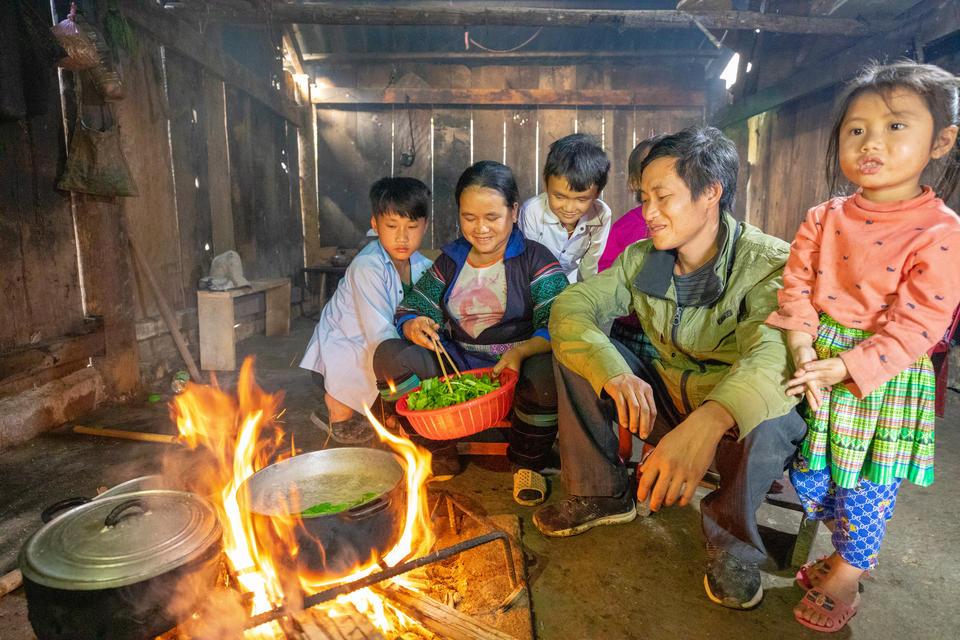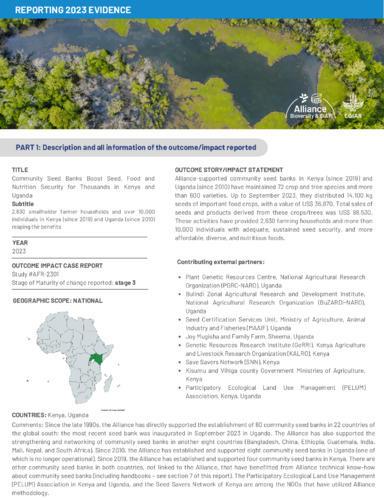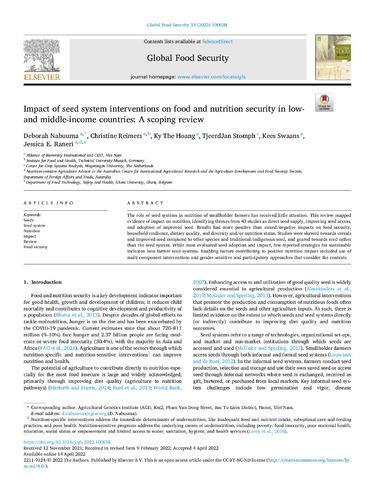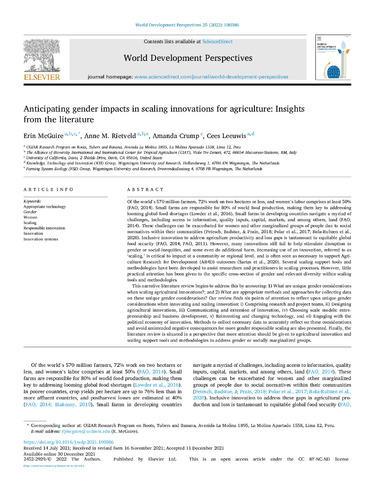Gender and Social Inclusion in Biodiversity for Food and Agriculture

Science and markets have promoted only a small fraction of the approximately 7,000 known edible plant and animal species for food and agriculture, with the majority sidelined but safeguarded through customary use in small-scale production in kitchen gardens and locally managed landscapes.
Often requiring few external inputs, this agrobiodiversity can contribute to nature-positive solutions for water, land and food systems challenges. While these species and varieties represent the majority of crops in low- and middle-income countries, they are overlooked by mainstream agricultural research and production, often only maintained by Indigenous peoples in rural areas, and often by women. Therefore, within the theme of biodiversity for food and agriculture, the Alliance explores traditional knowledge and its gender dimensions.
Global awareness of the agrobiodiversity crisis is far behind the increasing attention given to the climate crisis. We must ensure that gender-responsive agrobiodiversity management is incorporated into the development of biodiversity policy.
Mainstreaming the production of neglected and underutilized species (NUS) (also known as ‘opportunity species’) can be an entry point for gender equality. The potential of NUS for women’s empowerment relies on addressing the priorities of rural women, and mitigating the risk of male takeover when NUS increase in economic value.

Our research looks at:
- gender roles in seed systems, and the role of seed systems in promoting gender equality,
- who manages biodiversity for food, nutrition and agriculture, how it is managed, and,
- opportunities for women’s economic empowerment by mainstreaming biodiversity in food and agriculture.
Examples of our work
Focus on: Adding Gender to the ‘Seeds to Nutrition’ Pathway
Pathways from seeds to nutrition often depend on household dynamics, including women’s decision-making power. While women are often key to agricultural production and household consumption, they tend to have more limited access to resources than men. In Vietnam, Alliance researchers used randomized control trials to assess women’s empowerment and nutrition among ethnic minorities, identifying how a ‘seed system for nutrition’ intervention could increase women’s empowerment and nutrition, providing trainings on nutrition and crop production. The intention of the study is to identify pathways to more reliable nutrition and resource access for women. These considerations can also be found in the Alliance’s ‘Traditional Foodways’ tool.

Focus on: Local Foodways in Traditionally Managed Socio-ecological Production Landscapes
Biodiversity loss and increasing climate variability pose challenges to human health and food security, and more attention must be given to ensure that human and ecosystem health contribute to local food production and landscapes. Current research – e.g. the CGIAR initiative Nature+ – explores and promotes the conservation, cultivation, consumption, and commercial aspects of medicinal and food plant diversity. Local communities across the world often intuitively maintain healthy production and consumption systems based on a landscape approach. Yet, this is becoming less common, and as a result, many plants important for local food security are becoming scarce. The revitalization of traditional food systems through gender-responsive homestead and landscape-level interventions requires the upscaling of local knowledge through appropriate policies.
Focus on: Gender and Seed Systems
Seed systems are groups of individuals, networks, organizations and practices that conserve seeds for crop production. Alliance research is analyzing the gendered patterns of seed networks to understand who manages seeds, who drives innovation, who makes decisions, and who benefits from seed management and sale. We aim to contribute to a practice-to-policy environment where seed systems contribute to women’s empowerment.

Researchers working on this topic:
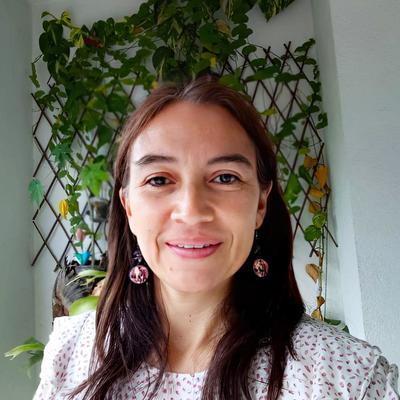
Marcela Beltrán
Postdoctoral Fellow
Marlène Elias
Director, Gender and Inclusion
Yasuyuki Morimoto
Scientist
Gloria Otieno
Scientist II
Anne Rietveld
Scientist II

